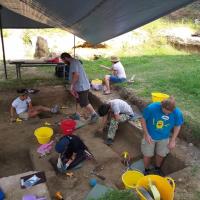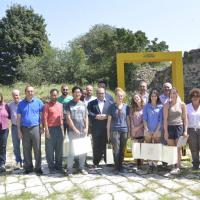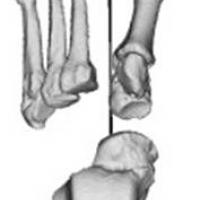Latest News






|
|
Ponzer et. al. published a paper Locomotor anatomy and biomechanics of the Dmanisi hominins in Journal of Human Evolution,saying that Dmanisi hind limb was functionally similar to modern humans and that inclusion of meat in the diet could have been associated with an increase in walking and running economy and endurance. Primitive retentions in the Dmanisi foot imply that locomotor evolution continued through the early Pleistocene.
Abstract

|
The effect of tibial torsion on foot position. Superior views of the foot in A. Neanderthals (La Ferrassie 1), B. modern humans, and C. Dmanisi (composite from CT-scans), D. OH-8 (from CT-scans of casts), and E. STW 573 (from Clarke and Tobias, 1995). Scale bar: 5 cm. |
The Dmanisi hominins inhabited a northern temperate habitat in the southern Caucasus, approximately 1.8 million years ago. This is the oldest population of hominins known outside of Africa. Understanding the set of anatomical and behavioral traits that equipped
this population to exploit their seasonal habitat successfully may shed light on the selection pressures shaping early members of the genus Homo and the ecological strategies that permitted the expansion of their range outside of the African subtropics. The abundant stone tools at the site, as well as taphonomic evidence for butchery, suggest that the Dmanisi hominins were active hunters or scavengers. In this study, we examine the locomotor mechanics of the Dmanisi hind limb to test the hypothesis that the inclusion of meat in the diet is associated with an increase in walking and running economy and endurance. Using comparative data from modern humans, chimpanzees, and gorillas, as well as other fossil hominins, we show that the Dmanisi hind limb was functionally similar to modern humans, with a longitudinal plantar arch, increased limb length, and human-like ankle morphology. Other aspects of the foot, specifically metatarsal morphology and tibial torsion, are less derived and similar to earlier hominins. These results are consistent with hypotheses linking hunting and scavenging to improved walking and running performance in early Homo. Primitive retentions in the Dmanisi foot suggest that locomotor evolution continued through the early Pleistocene.
